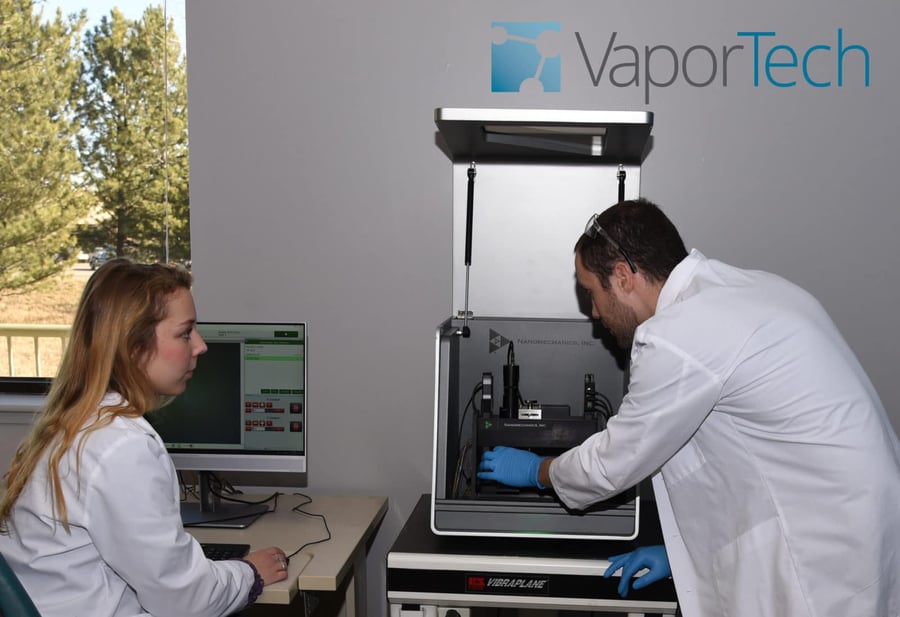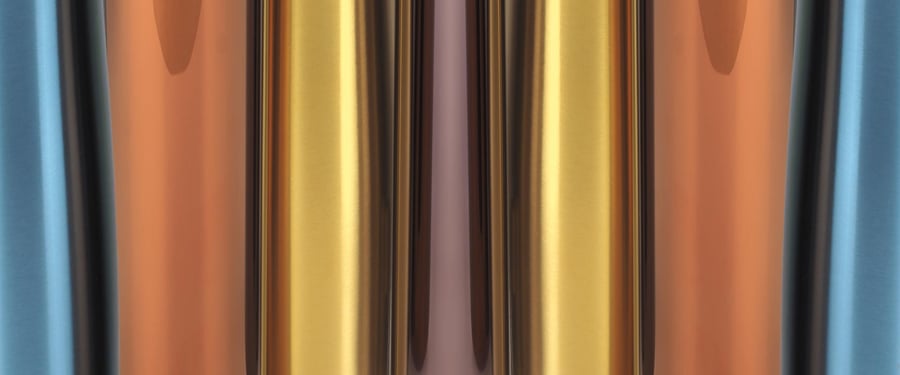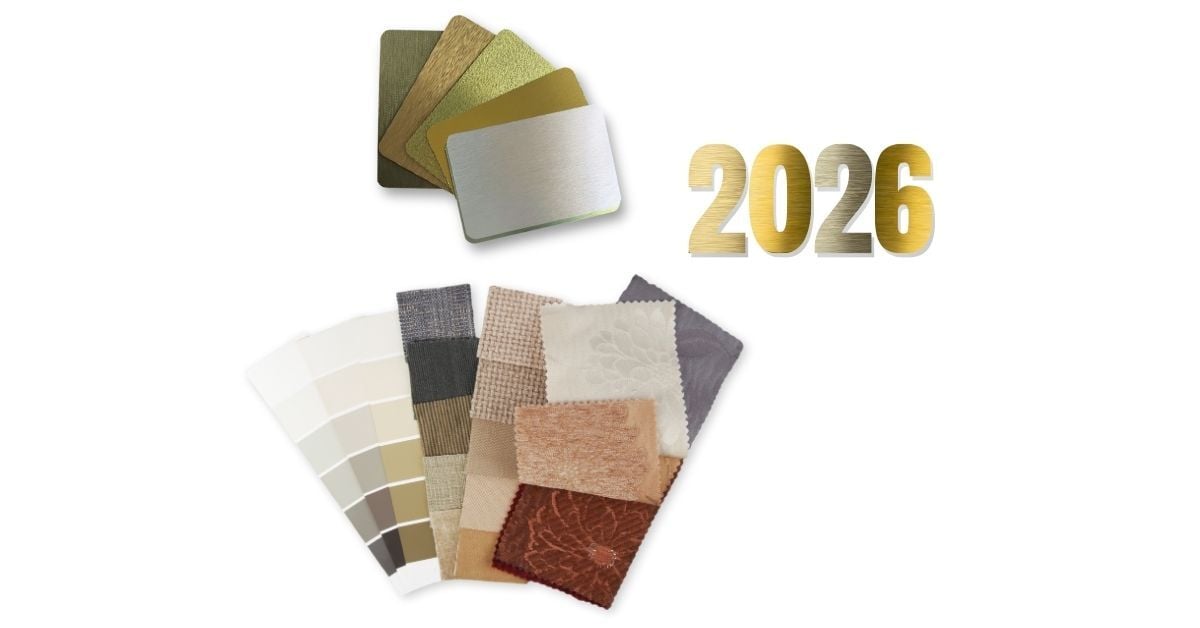The Benefits of PVD Coating on Electroplated Parts
-
A rainbow of colors: PVD coatings add vibrant color options to electroplated parts while adding durability and corrosion resistance.
-
Compatibility with chrome plating: VaporTech zirconium-based PVD coatings are compatible with hexavalent and trivalent chromium layers.
-
Cost-effective, versatile solutions: By integrating PVD systems into manufacturing operations, manufacturers decrease production time and enhance quality control.
While electroplating and PVD finishing could be considered competing technologies, they often work together to provide additional value for our customers. Here, learn more about using PVD coating on electroplated parts.
The technology behind chrome plating is an underappreciated marvel of materials science—a fascinating alchemy of chemistry and metallurgy that results in the most widely recognized metal surface finish available. Introduced in the 1920s, chrome plating quickly rose to prominence in the auto industry, consumer products, and then in the home with faucets and door hardware. It continues to be considered the standard for metallic finish durability and aesthetic appeal. Chrome is varnish- and corrosion-resistant, and its lustrous mirror-like shine and can hold up to a beating –it only lacks one key feature: variety. Chrome is chrome. It’s a classic look for a reason: it never changes. And that’s where PVD comes in.
What’s unique about chrome coating?
Before discussing how PVD coating systems can benefit chrome plating, let’s talk about why this coating is special. The first aspect that needs explaining is that “chrome plating” comprises two or three different metal layers, and the chromium itself is present in the smallest amount. On most substrates, such as steel, zinc, and plastic, the plating stack includes copper, nickel, and finally, a top layer of chromium. When applied to brass, the copper is not needed and begins directly with nickel and chromium. The thick copper layer is used as an adhesion and brightening layer to allow the subsequent nickel and the chromium to deposit correctly. The nickel layer is the backbone of the entire coating and does the heavy lifting of corrosion protection, mechanical support, and—with an assist from copper—provides the mirror-like surface finish. One feature of both the nickel and copper deposits is that special additives in the plating baths will drive the metals to grow preferentially in the deep valleys of the surface texture, filling in the rough areas that “level” the surface. This process creates a mirror finish that does not need to be produced by costly physical polishing.
Alternatively, other materials can be added to the nickel baths to provide an attractive matte or pearl-like texture. The copper and nickel layers are applied quite thick –5 to 15 microns for copper and 10 to 35 microns for the nickel, depending on how much corrosion protection is needed (see ASTM B456). On the other hand, the final chromium layer is typically just 0.25 microns thick—just a fraction of the overall deposit thickness. A quick flash of chromium is all that is needed: in this case, more is not better. Thicker hard chrome deposits have their place in the functional, wear-resistance world, but thin is the standard for decorative chrome.
A thin but significant layer of chromium
Even though the chromium layer is thin, the contributions are significant. As pure metals go, it’s one of the hardest there is (~1000HV), which, when built on top of a supporting structure of thick, moderately hard nickel (~600HV), will further enhance the toughness and durability. Chromium also has a strong naturally forming surface oxide layer, which helps protect it from chemical attack and tarnishing –the same reason chromium makes stainless steel alloys “stainless.”
A serious drawback: strict regulation of the chemical plating process
One drawback to chromium plating is the strict regulations around the chemicals used to produce the coatings—not the metal layer itself, which is harmless. The predominant method used for chrome plating involves the hexavalent form of chromium (Cr6+). The other form of chromium, trivalent Cr3+, lacks the same performance and bright appearance as the hexavalent form. It is a darker color and typically does not provide the same level of corrosion resistance. The plating industry has made great strides in improving these aspects over the past few decades, and many markets have embraced the process. However, the hexavalent form continues as the dominant approach. Please note that PVD coatings provide one alternative to replacing hexavalent chrome with a better matching appearance—but that is a topic for another post.
Chromium in decorative coatings—PVD on electroplated parts
Regardless of the type of chromium deposit used, both are entirely compatible with the array of decorative PVD coatings we offer at Vapor Technologies (VaporTech®). Parts that have been chrome plated typically require no additional treatment and are suited to be put directly into a coating system for applying a new finish. This allows manufacturers to add various colors to products with a chrome finish by adding a PVD system to their production line. These decorative PVD finishes are thin and conformal to surface features, so the parts retain their texture –polished will stay polished, and matte will remain matte.
The zirconium-based PVD coatings (ZrN, ZrCN, ZrOC, etc.) are very compatible with the plating. They will maintain the same level of corrosion protection while enhancing the overall level of durability for chemical and wear resistance. Our studies have shown that adding Zr-based PVD coating on top of trivalent Cr can improve corrosion performance to the same levels as hexavalent Cr. And if one needs their trivalent Cr to match visually with hexavalent Cr, we can do that too—ask us how.
Our coatings engineers are well-versed in surface finishing techniques beyond PVD, such as electroplating, powder coating, anodizing, and mass finishing. We are happy to work with our customers to see how these technologies can create new solutions.
Recent posts

PVD-Finish Faucets and Fixtures with Coatings Trusted by Global Manufacturers

How Our Labs Develop PVD Coatings for Customer Needs





